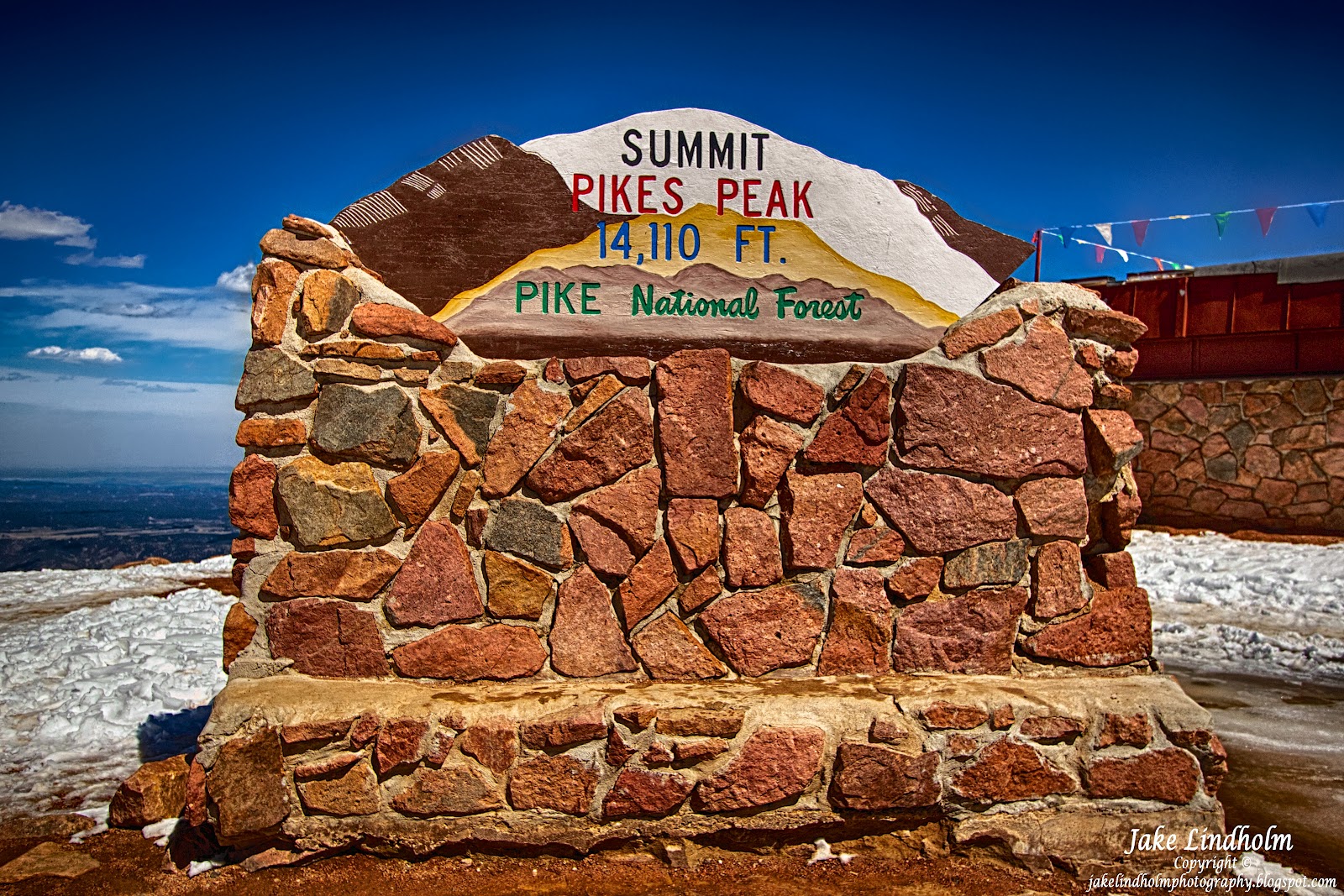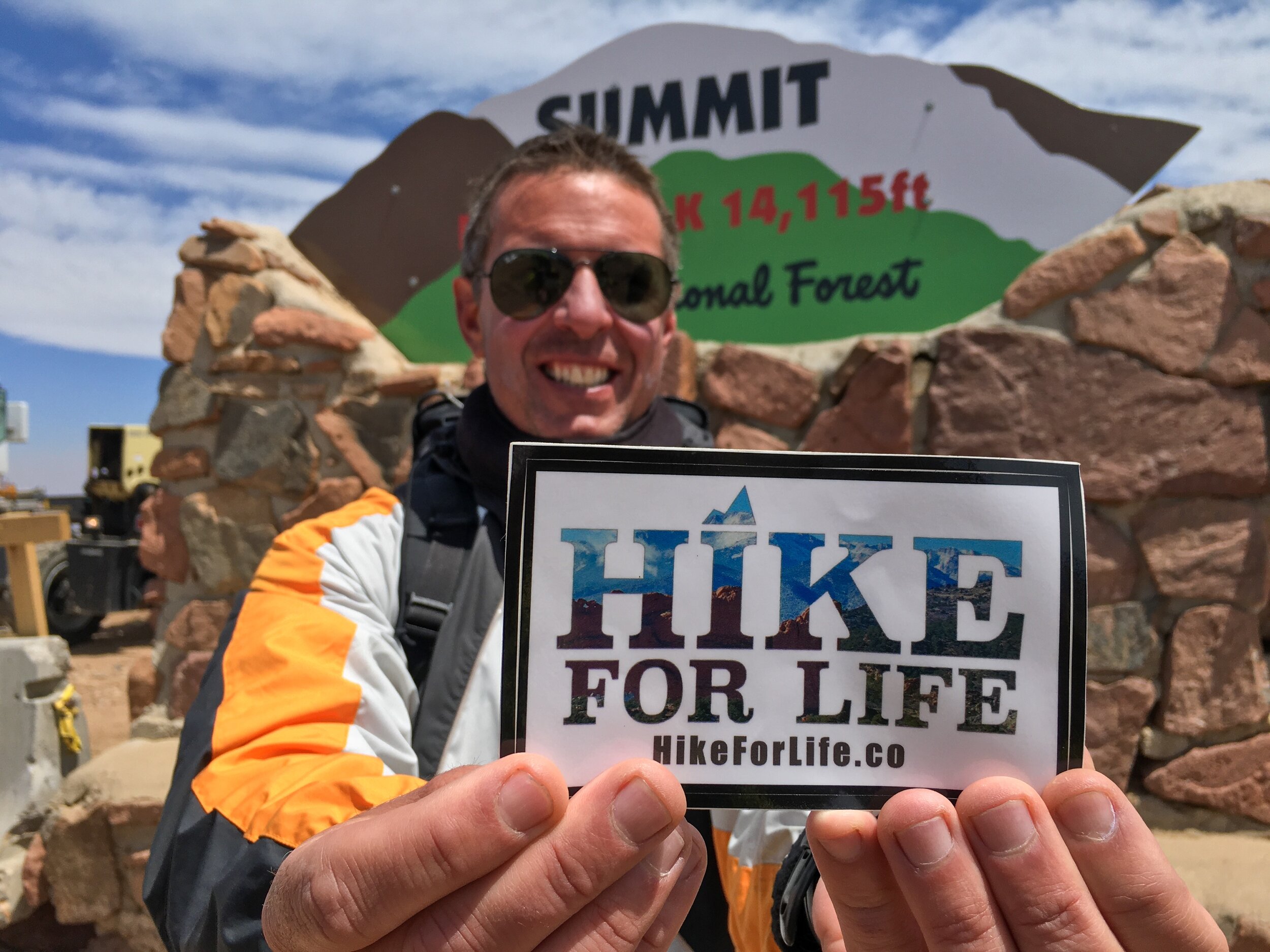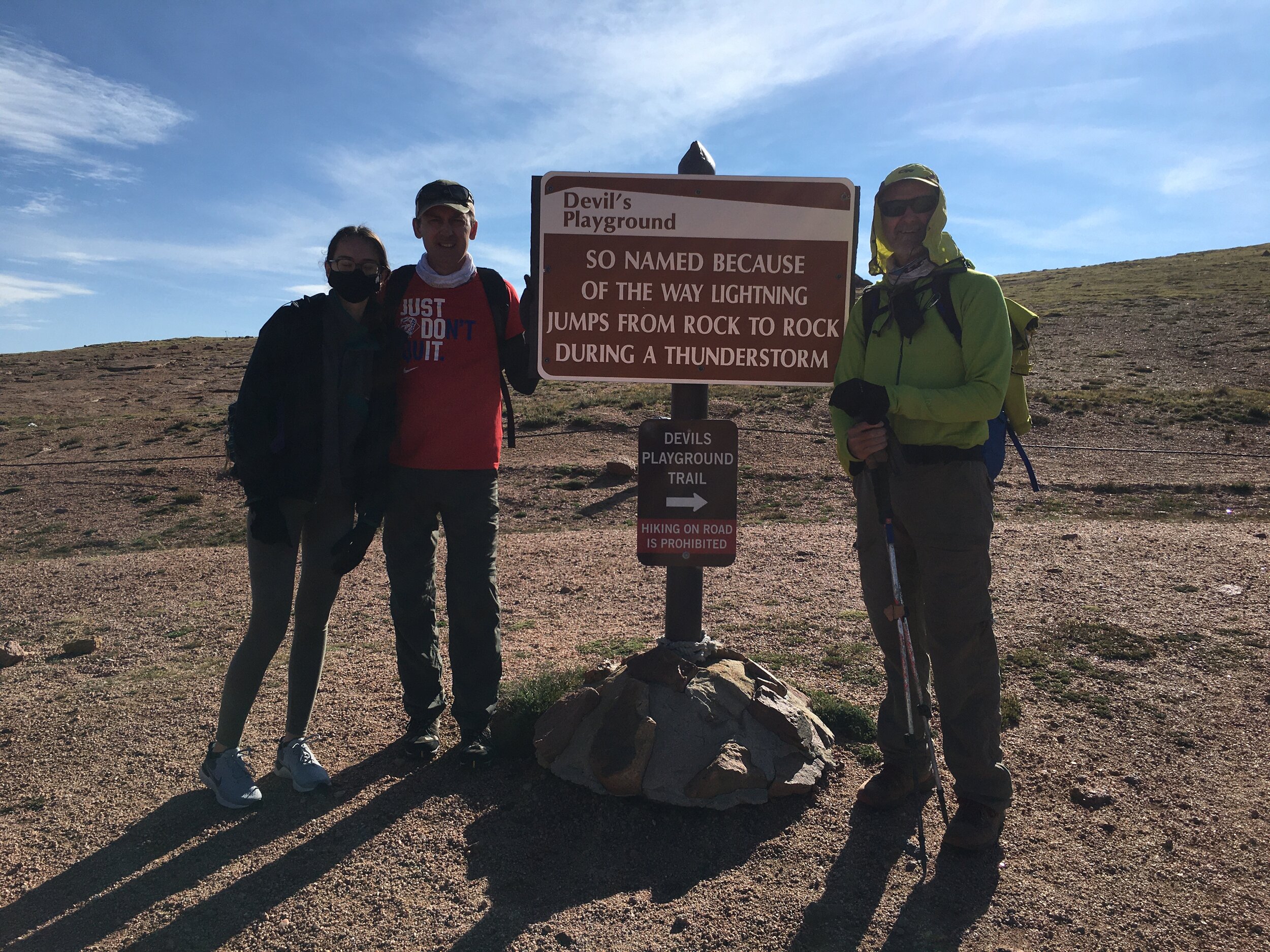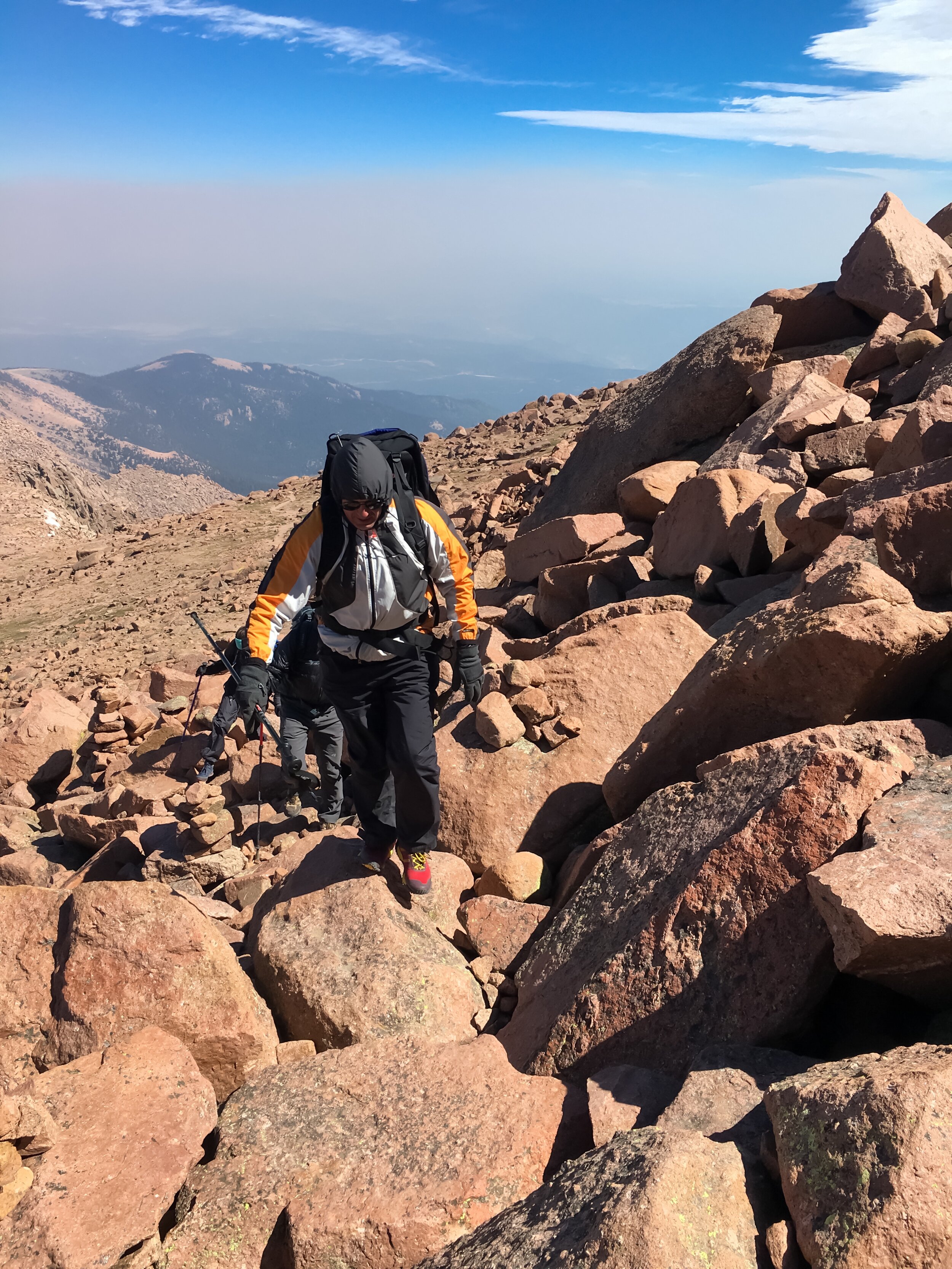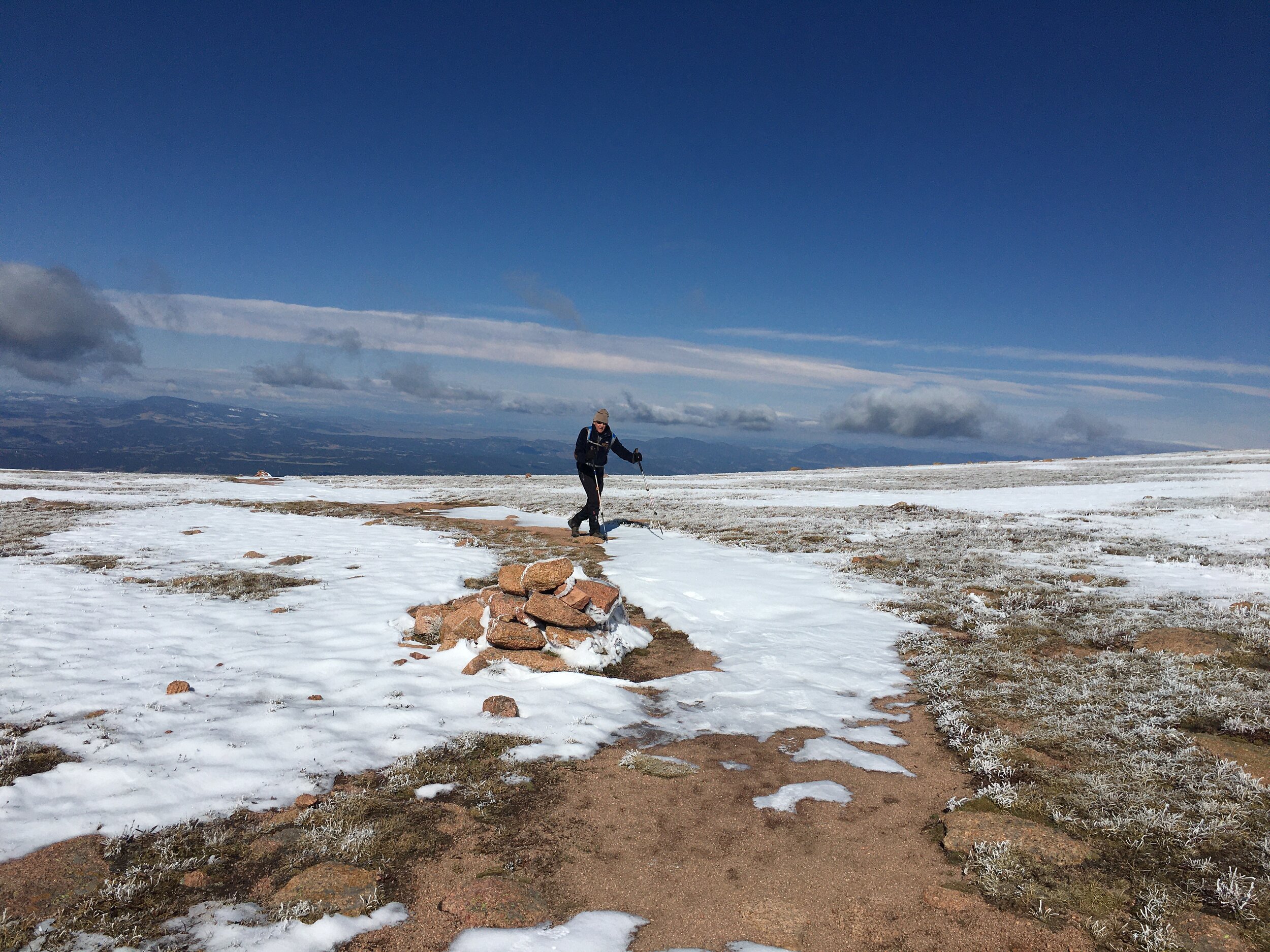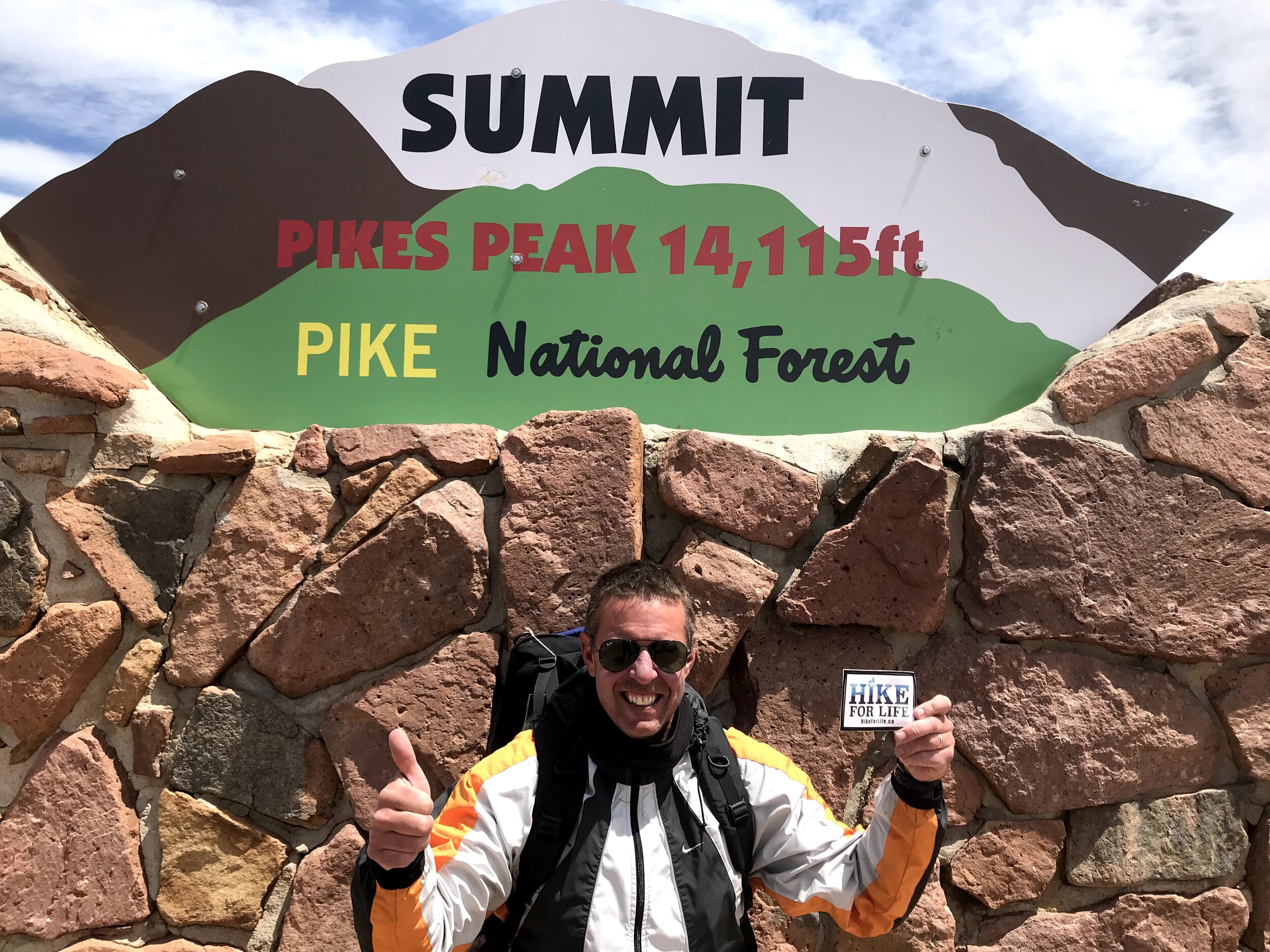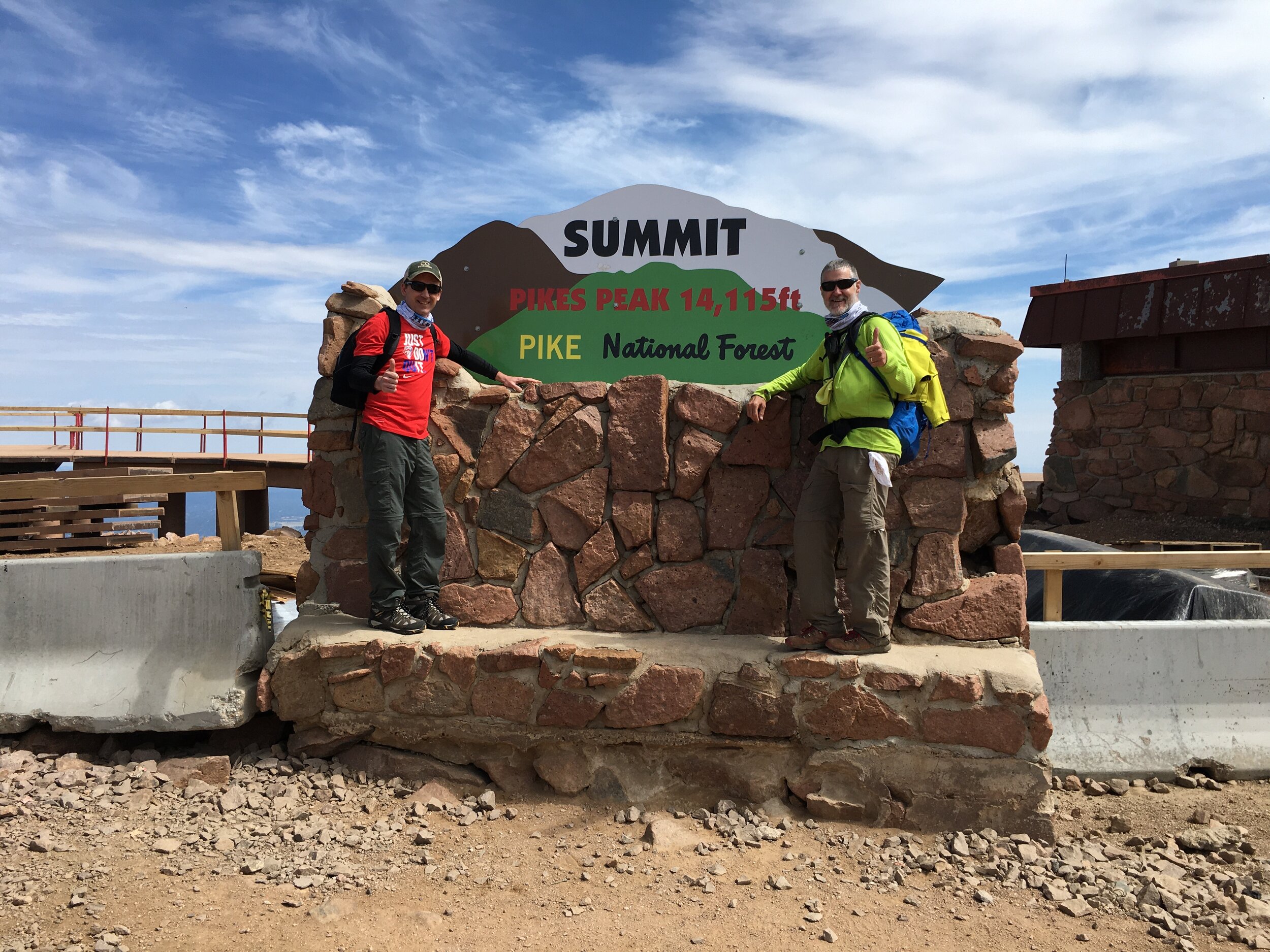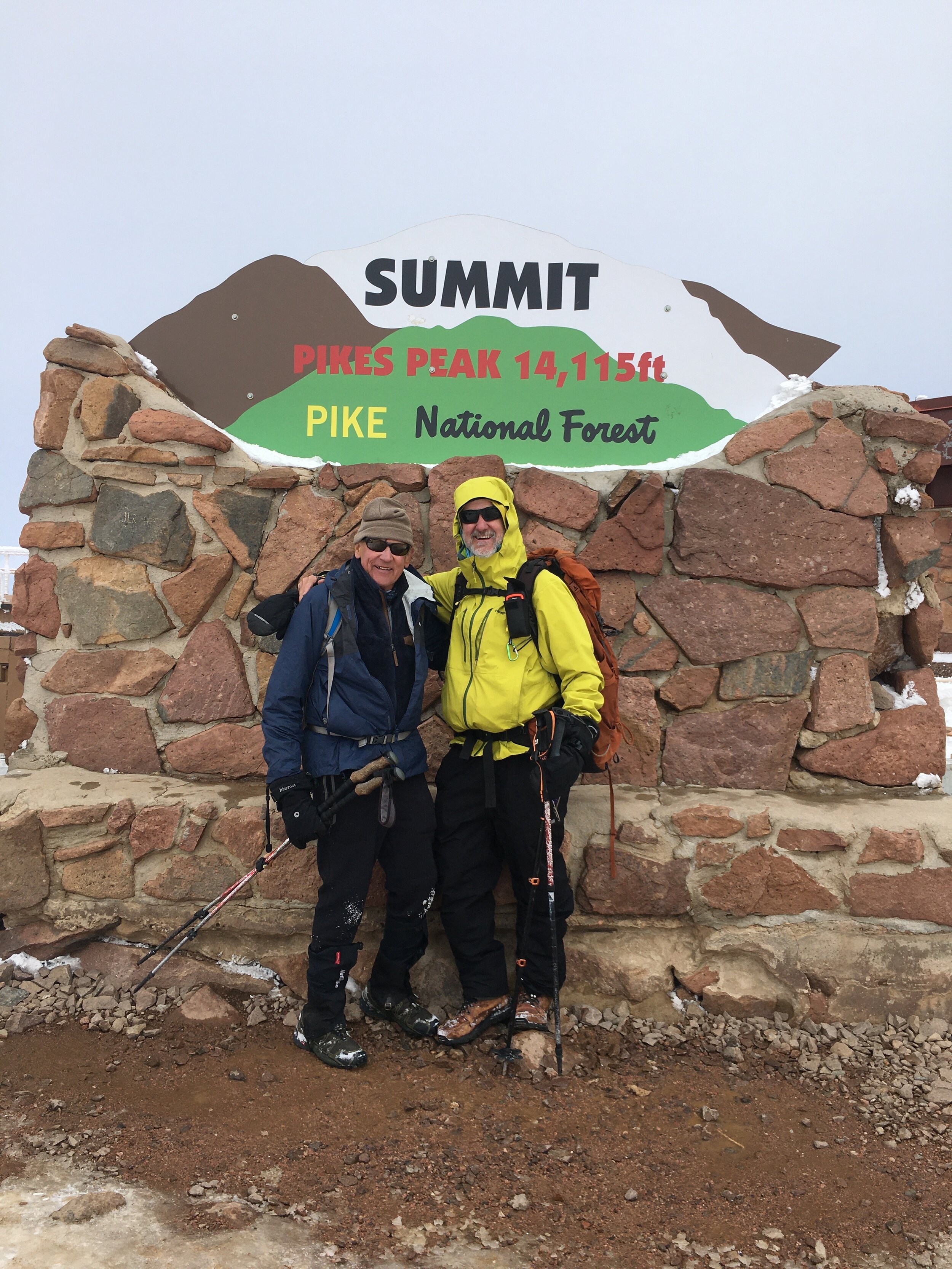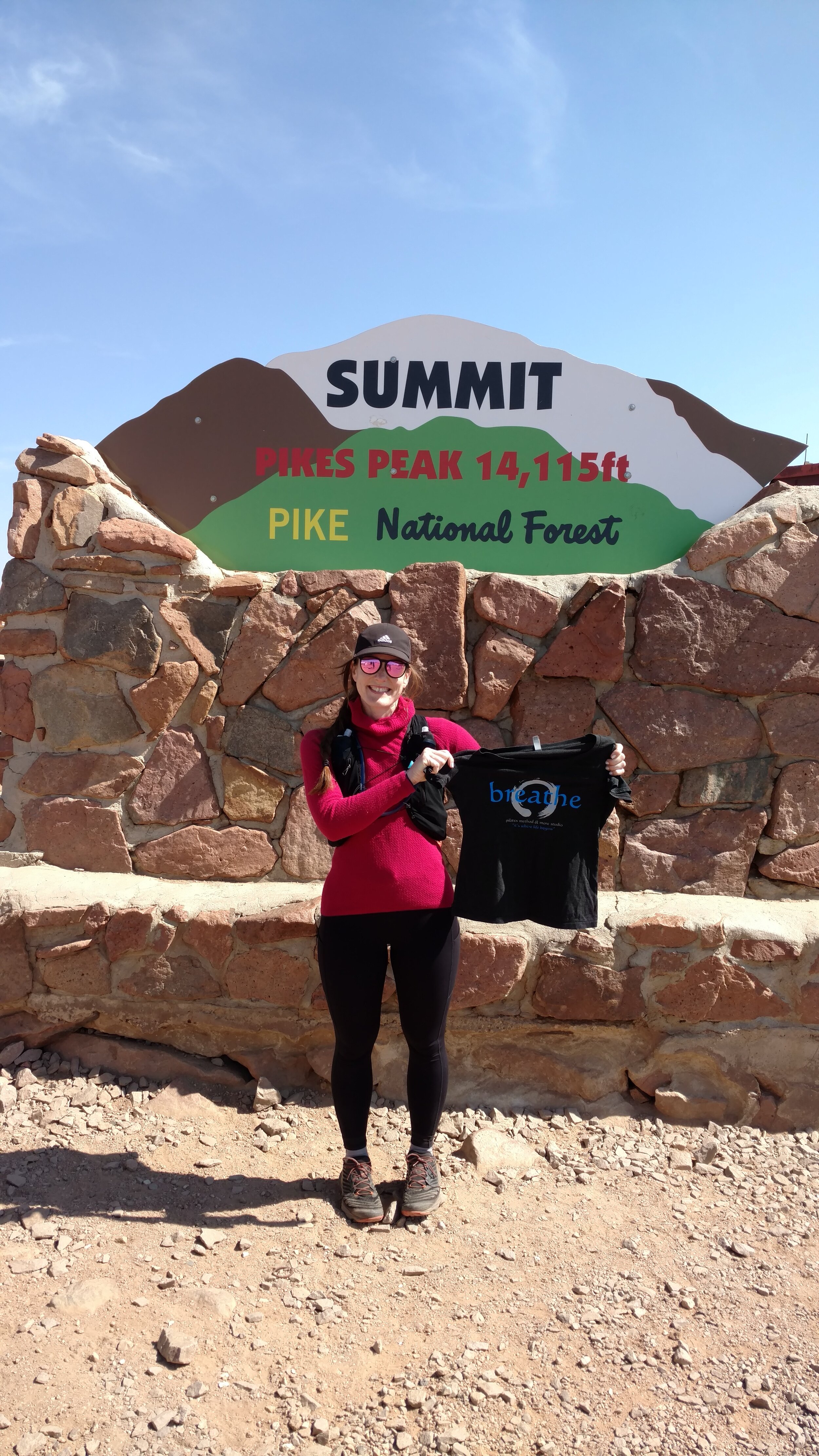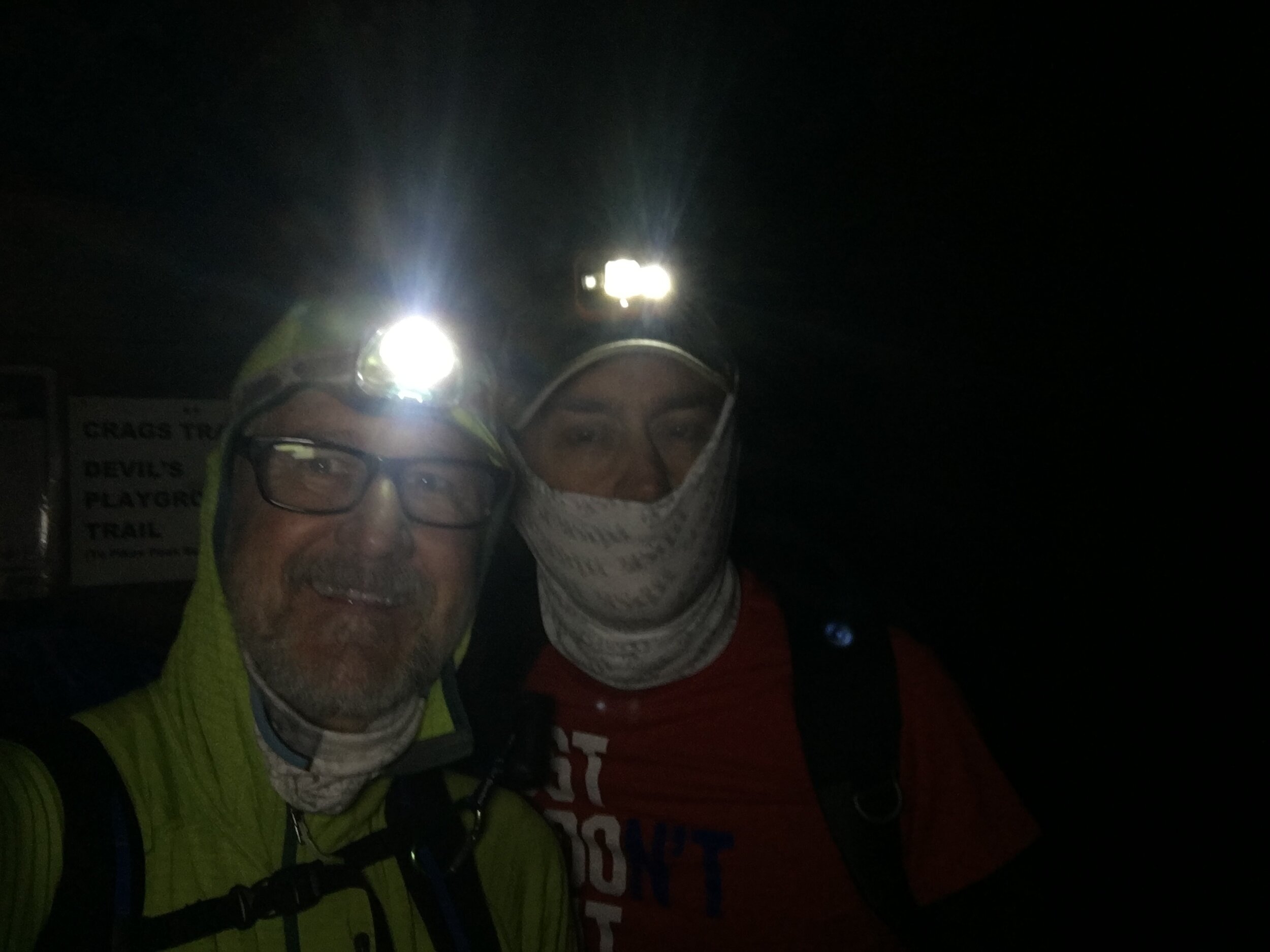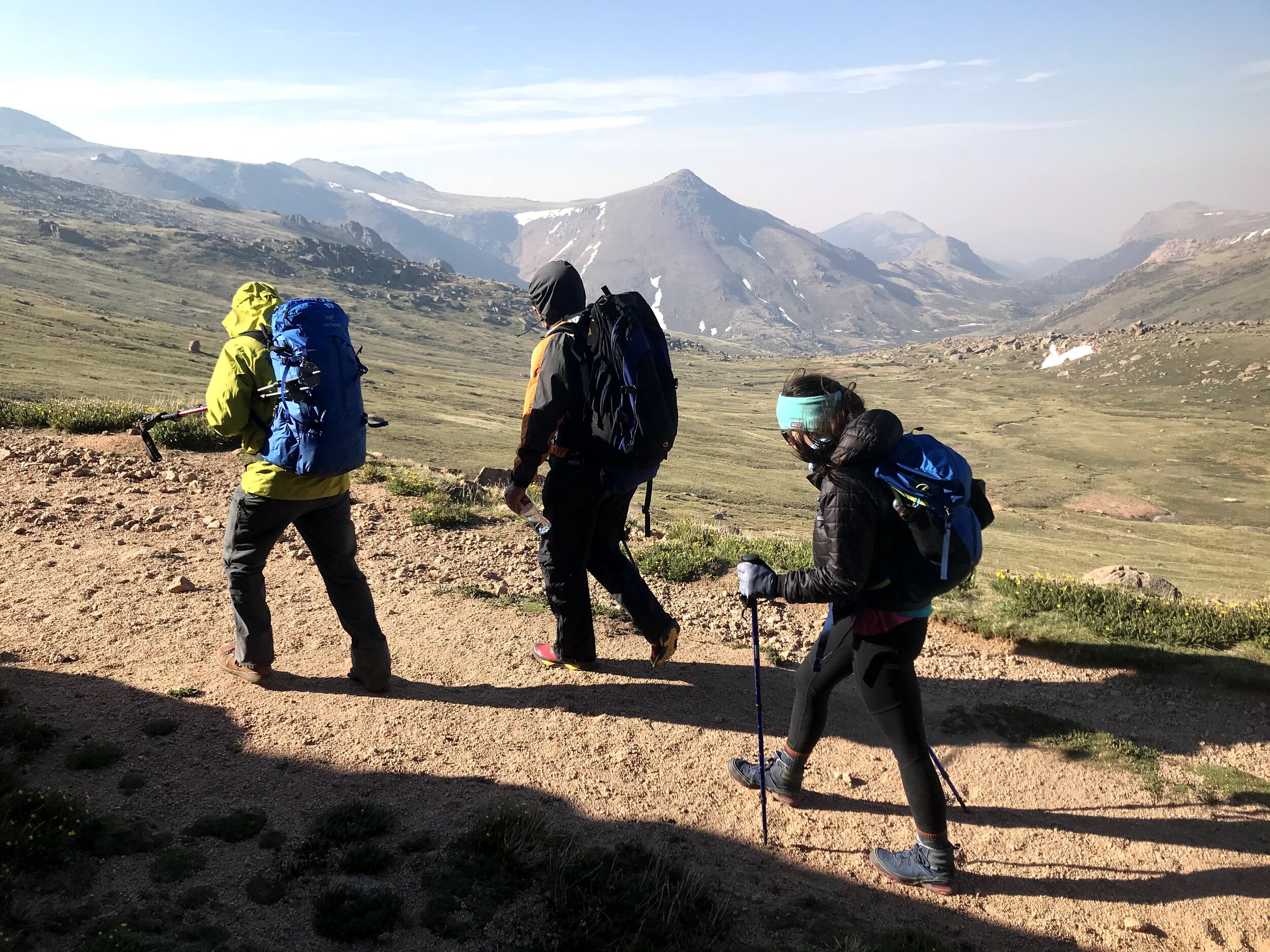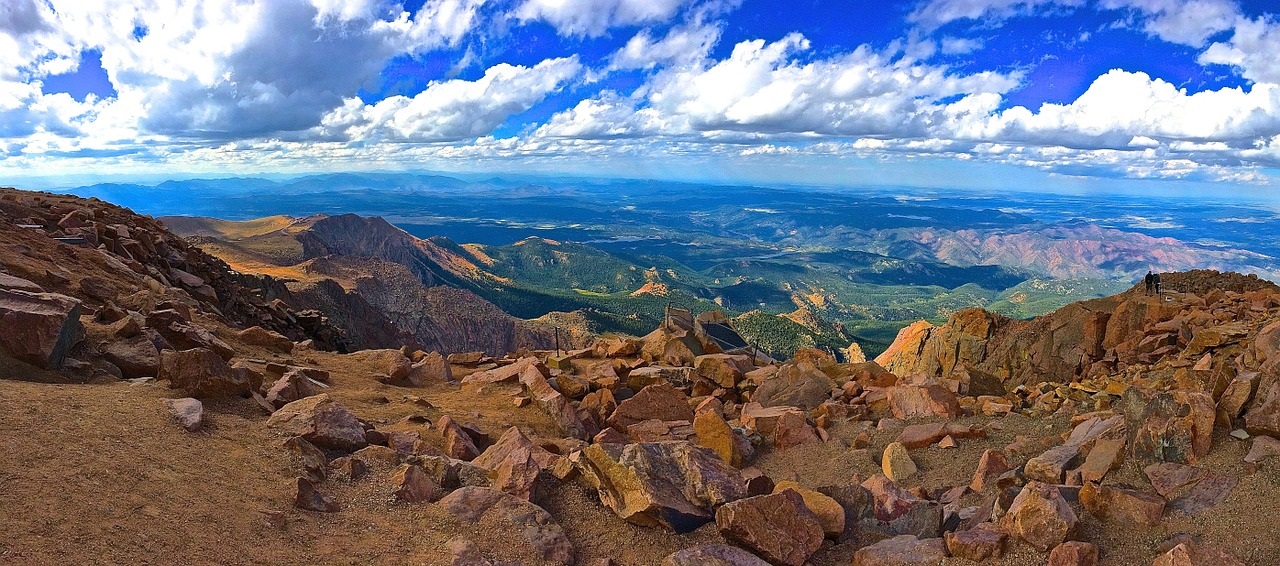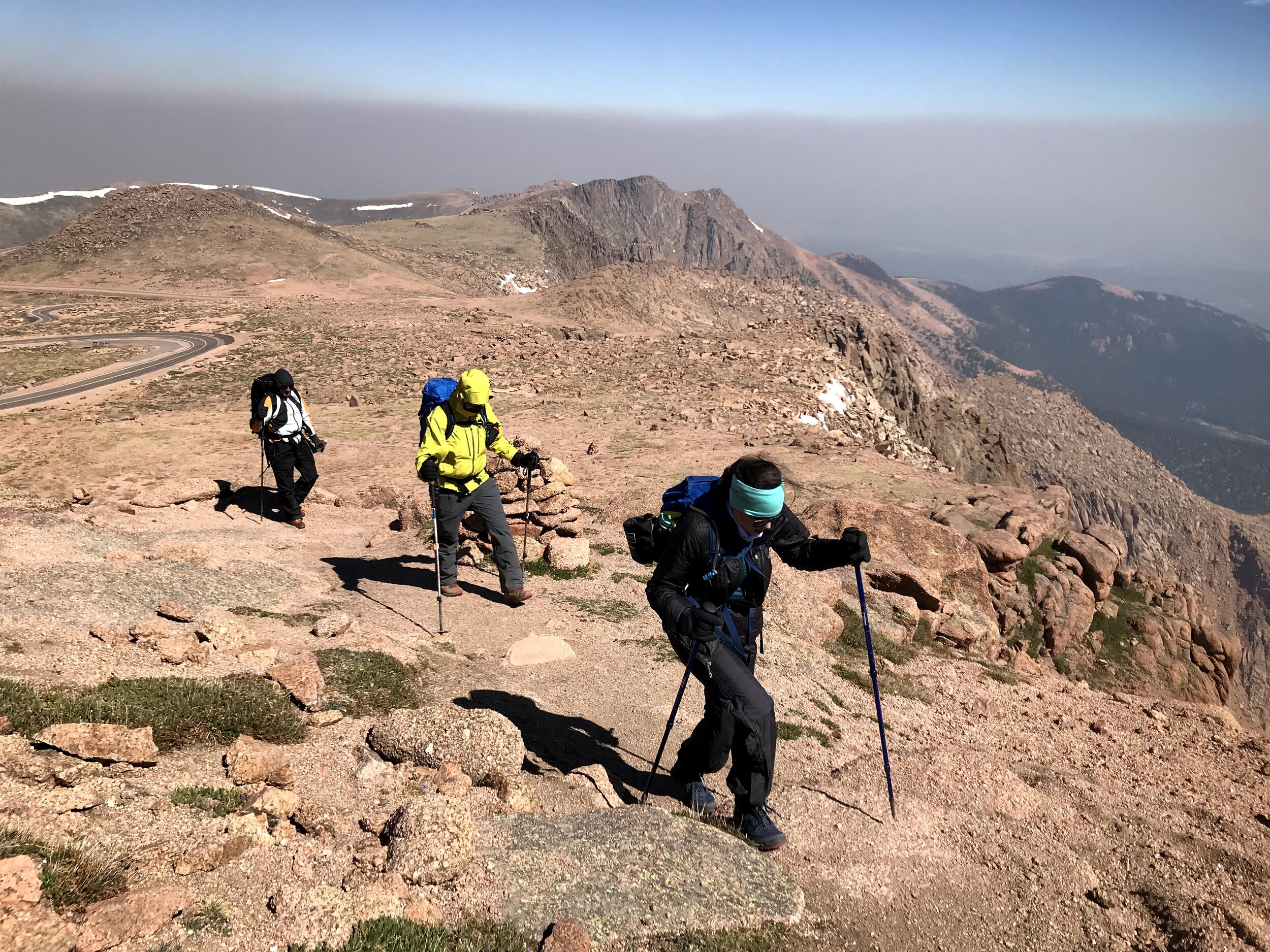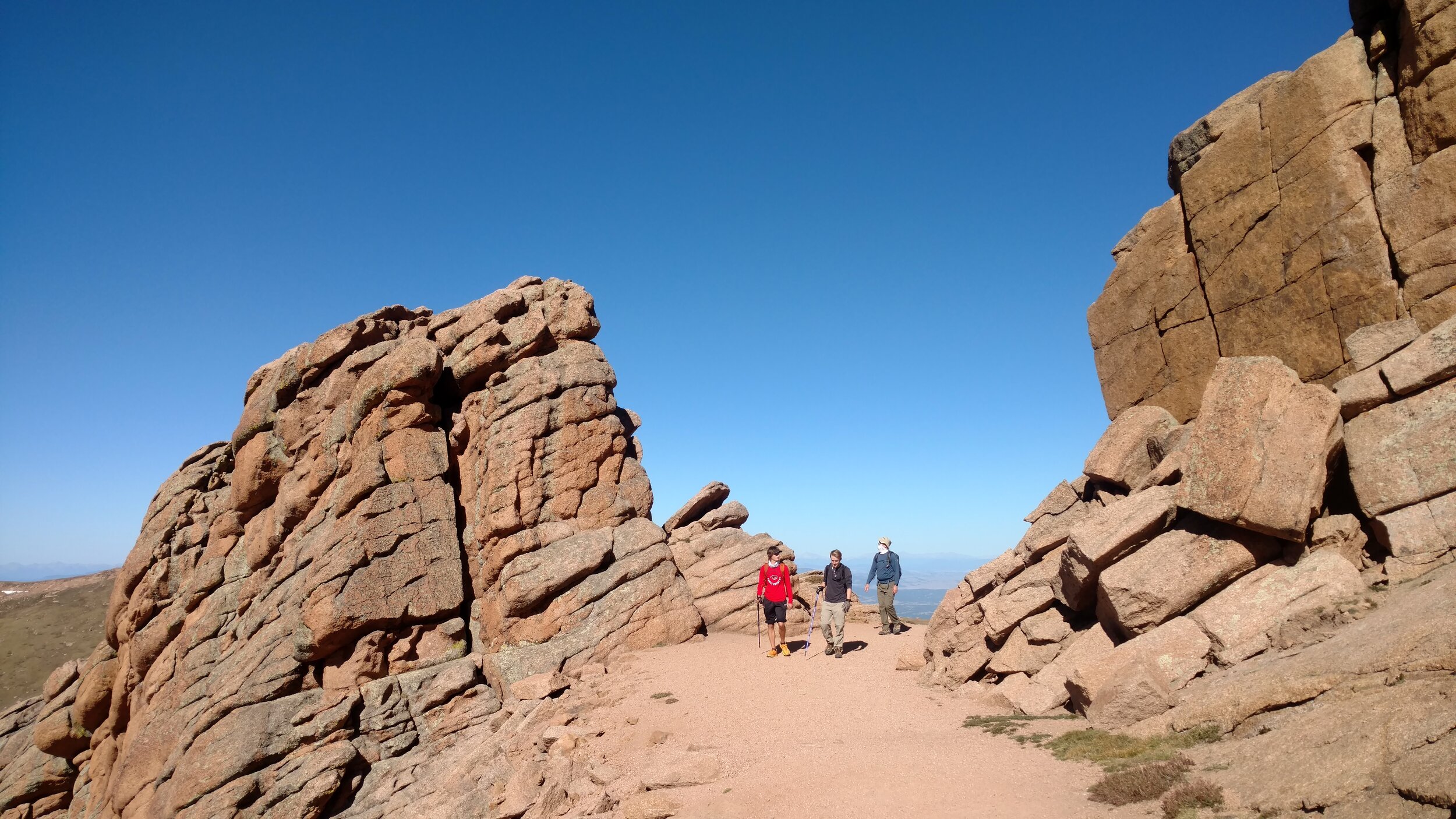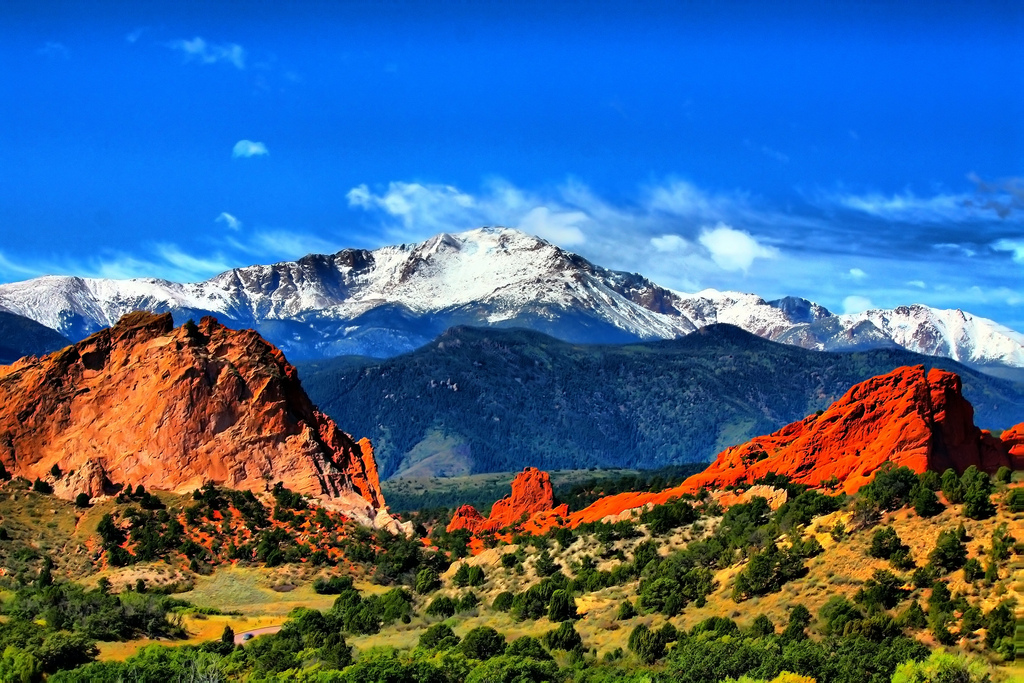Pikes Peak Climb
Have you dreamed of conquering Pikes Peak mountain?
Ready for an unforgettable hiking trip in Colorado?
Whether you’re new to hiking or a seasoned pro, Pikes Peak hiking offers the perfect challenge.
If you haven’t climbed a Colorado 14er yet, now’s your chance!
Perhaps you’re an experienced hiker looking for a local guide to show you the way? We've got you covered!
ABOUT THE HIKE
Imagine yourself stepping onto the trail, the scent of pine in the crisp mountain air as you begin your Pikes Peak hiking adventure.
The path winds through peaceful forests before opening up to Devil’s Playground, where jaw-dropping views of the Continental Divide push you forward.
Keep going—because at the summit of Pikes Peak, Colorado, you’ll stand at 14,115 feet, taking in views that stretch for miles.
It’s challenging, it’s breathtaking, and it’s a hiking trip in Colorado you’ll never forget.
And the best part? We’ll be with you every step of the way!
BOOK NOW AND EXPERIENCE:
Stunning mountain scenery and breathtaking views
Views of the iconic Continental Divide
The opportunity to summit a Colorado 14er
Gorgeous overlooks of serene reservoirs
FREE Pikes Peak Hiking Gear Guide
Download your free guide with the 5 Fundamentals of Hiking and a must-have Pikes Peak Gear List for every season!
Click Below for Your Freebie!
Are you visiting Colorado Springs for a short amount of time? Are you wondering what some amazing out of the ordinary restaurants and activities are that the locals would do?
Then this is the guide for you!!!
Skip the hours of research and let us do the work for you!
Get 15 pages of expert recommendations from our Hike For Life team—favorite places to explore, hidden gems, and the best spots to eat—so you can experience Colorado Springs like a local.
What to Expect on your Pikes Peak Climb
We will meet you and do a pack check at 4:00am, drive to the Crags trailhead and start hiking at 5:30am, guiding you up the western approach to Pikes Peak.
This route is the most scenic and shortest way to the top.
From the trailhead, we will take a trail that meanders through switchbacks and above tree-line as you traverse Devil’s Playground at 4 miles—aptly named for the lightning that can jump from rock formation to rock formation during our Colorado summer storm season!
From there, you will continue hiking another 3 miles, passing by some great rock formations overlooking Woodland Park and the Catamount Reservoirs below!
You will also pass “Little Pikes Peak” a recognized Colorado 13er as you make your way across to the last push up the talus to the summit of Pikes Peak at 14,115 ft!
Why do we call this hike a summit attempt?
We cannot guarantee a summit on a particular day due to weather, pace, and other factors.
We must descend after 7 hours (or sooner if inclement weather) whether you are successful reaching the summit or not.
We do our very best to safely and responsibly guide you on the trail, taking care of you every step of the way.
As part of our personalized planning, we closely monitor the weather and do everything within our power to help you climb America’s Mountain!
Why attempt Pikes Peak with Hike For Life?
Our summit guides have extensive hiking experience not only climbing Pikes Peak but many other Colorado 14ers (some multiple times!) as well as many other challenging climbs within the United States.
We provide personalized planning for each guest. We will guide you extensively as you prepare for your summit attempt as well as guiding you on the trail. Leave the preparation to the pros!
How much does it cost?
The cost for an individual is $549 for the full round trip from the Crags trailhead (TH).
This experience includes a virtual meeting with HFL, offering unlimited Q&A before your summit attempt.
You'll receive expert gear advice, along with detailed gear lists to ensure you're fully prepared. We also provide training suggestions for both at-home preparation and hikes in Colorado.
Throughout the process, you'll have dedicated mentoring from a highly experienced and certified summit guide to support you every step of the way.
The price per person drops significantly with more hikers: 2 hikers – $875 each, 3 hikers – $1,200, 4 hikers – $1,525, 5 hikers – $1,850.
If you'd like a ride to the trailhead or a lift down the mountain instead of hiking back, we can arrange it for an additional fee.
Thinking about tackling a Colorado 14er? Know before you go with this free PDF!
Climbing a 14er: The Basics is a free Hike for Life download—click to learn what it takes to summit safely.
Pikes Peak Climb FAQ
Q: When is the best time in my trip to hike Pikes Peak?
A: You may feel great (or at least normal) on your first day at altitude because your body is able to compensate for the physiologic changes initially. However, during the subsequent 24-48 hours, most people experience some level of altitude sickness as their body makes short-term adjustments. Therefore, HFL recommends arriving at least 3 days prior to your planned summit hike. Our recommendation is based on scientific research, anecdotal evidence, and our advanced guides’ experience!
Q: What are symptoms of Altitude Sickness/Acute Mountain Sickness?
A: Headache
Loss of Appetite, Nausea, Shortness of Breath, Fatigue, Difficulty Sleeping, Increased Heart Rate, Increased Respiratory Rate
Q: How long does it take to acclimatize to a higher elevation?
A: This depends on how long you will be here. There is short-term acclimatization that occurs over several days to several weeks. This mainly involves adjusting your breathing rate to compensate for the changes in oxygen and carbon dioxide exchange as well as lactic acid levels that are produced as a result. There is also long-term acclimatization that occurs over about three months as your body increases red blood cell production and vascularization to improve oxygen delivery to your tissues.
Q: What can I do to help myself acclimatize best?
A. Drink extra water!!
Proper hydration is the most important step you can take to help your body acclimatize and prevent symptoms of altitude sickness. Within the first 24 hours of your trip, your body decreases the amount of fluid/water in your blood to increase the ratio of red blood cells to fluid in an attempt to increase oxygen delivery to your tissues. Initially, this helps you feel better, however, soon the symptoms of dehydration will set in. This is why many people will feel worse during the second and third days of their trip. Not only is the altitude affecting your hydration status, but also, Colorado Springs has a very dry climate. Additionally, if you are flying into Colorado, the plane flight contributes to dehydration. Lastly, consuming substances that have a diuretic effect on your body, such as caffeine and alcohol, also contribute to dehydration. Thus, HFL recommends drinking plenty of water in the days leading up to your summit hike.
A. Training Hike
Complete a short training hike, either with us or on your own, a day or two before your planned summit hike. We are happy to suggest training hike options for you!
Q: Is taking Aspirin or Diamox beneficial for acclimatization?
A: Aspirin can be beneficial for improving symptoms of altitude sickness such as a headache, however it does not help address the physiologic changes your body is undergoing due to being at a higher altitude. Acetazolamide/Diamox is a prescription medication that helps your body with the necessary physiologic adjustments at altitude. However, HFL does not recommend taking Diamox because it can mask the symptoms of altitude sickness which could be dangerous on a summit hike. If you are considering a prescription medication for altitude sickness, consult with your physician to learn more about the benefits and side effects of this medication based on your individualized medical management.
Q: Why does HFL choose to guide from the Crags Trailhead/Northwest Approach?
A: We guide from the Crags Trailhead (for first-time 14er climbers) because it is shorter, offers nicer views of the Western Rockies, and can relatively easily be accomplished in one day with a lighter gear load compared to Barr trail. If you would like more information about Barr trail, we can further discuss the pro’s and con’s of this trail.
Q: Can I camp at Barr Camp?
A: There are numerous campsites spread out between Barr Camp and A-frame so there is an option for a 2-day hike. They are usually pretty busy in the summer. You can visit their website for more specifics.
Q: Can I catch a ride down from Pikes Peak?
A: There are limited transportation services offered from Pikes Peak to Manitou Springs. If you would like more information, we can further discuss these options.
Q: Is the air really “thinner” in Colorado?
A: This is a misnomer because the amount of oxygen in the air is the same 21% as at lower altitudes. What does change is the PO2 (partial pressure of oxygen) which affects the physics of how you breath and how oxygen and carbon dioxide are exchanged in your lungs, thus giving you the “short of breath” feeling. The term “thinner air” derives from the physics of the change in P02 because the O2 molecules are able to move more freely since there is less pressure applied to them.
Q: What do I need to pack for my summit hike?
A: We will provide a complete Gear List for you! It is important to remember that it can still be cold in Colorado during the summer, especially on the top of a 14er! Thus, dressing in layers is key. Also, remember to bring gloves and a warm hat for the summit!
Q: What training do you recommend to prepare for a Pikes Peak Summit hike?
A: Increasing your aerobic conditioning is key! This means you are able to exercise at moderate intensity for a long period of time without tiring. This requires aerobic endurance conditioning 3-4x per week AND strength training 2-3x per week. Specific workout regimens vary.


